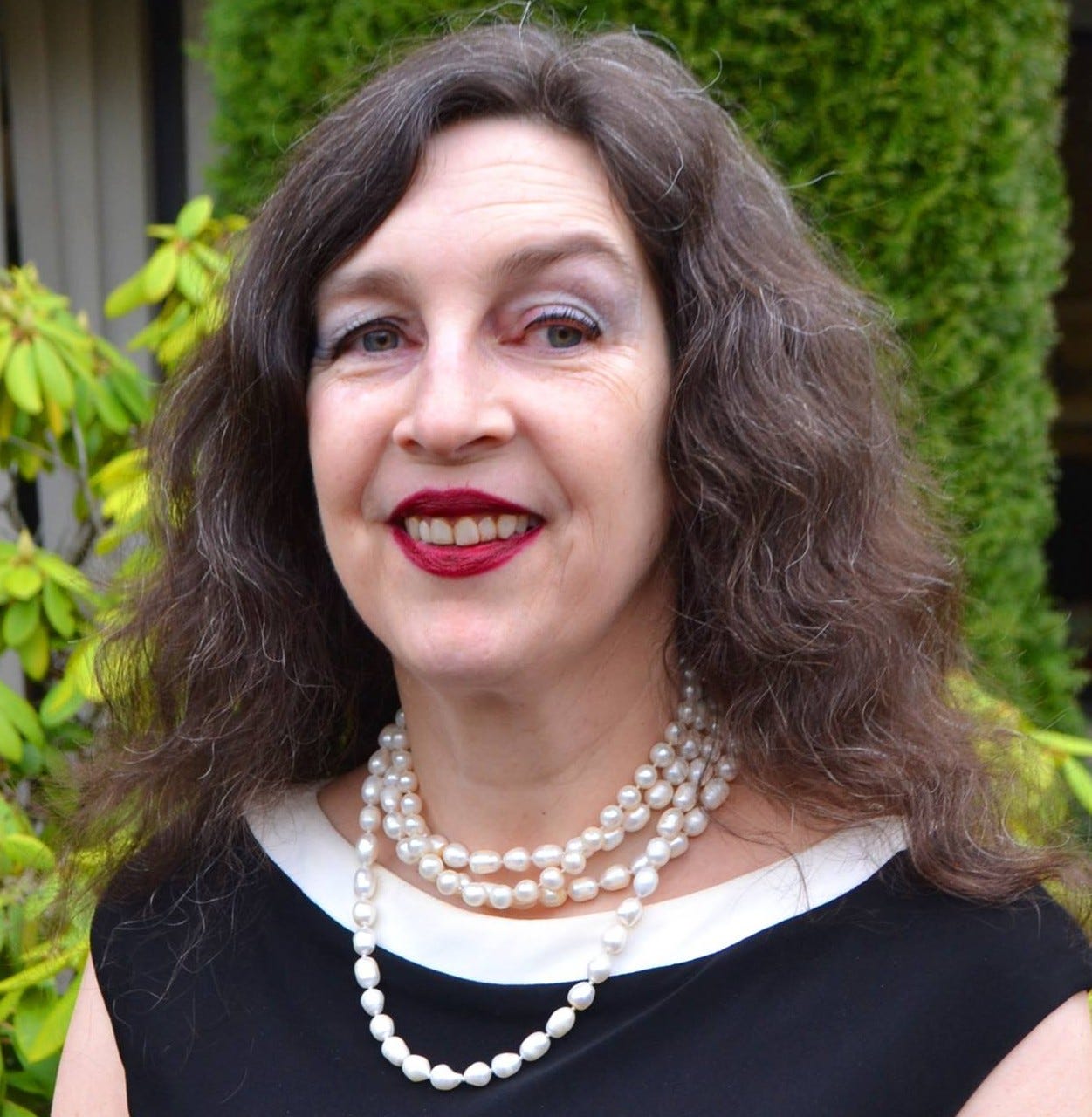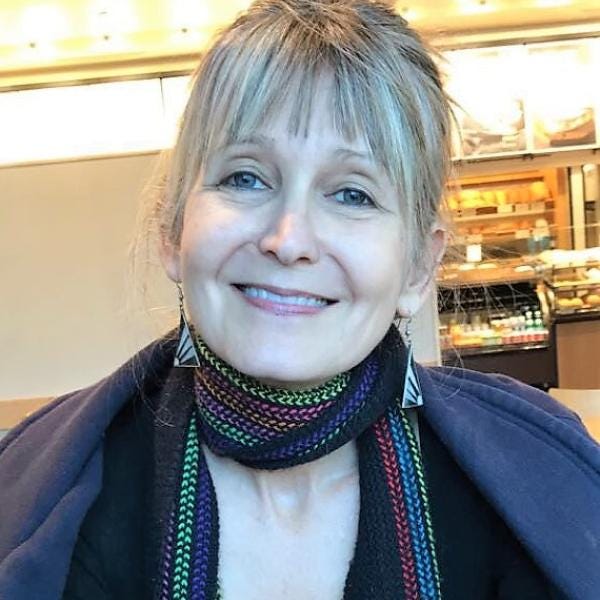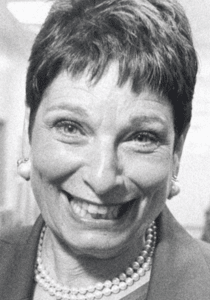Notable Italian Women in the Pacific Northwest
From British Columbia to Oregon, Italian women from the past and present that you should know
Today, May 11th, 2025, is Mother’s Day in North America. I thought it only fitting to celebrate the contributions of women of Italian heritage in the Pacific Northwest, including my mother, Silvia Floreano.
My mother was raised in San Daniele del Friuli, a hamlet in the province of Udine in northeastern Italy, about an hour or so north of Venice. A farmer’s daughter, who had never travelled more than an hour from home, left it all behind when my father showed up and proposed under a full moon. A neighbor-cum-matchmaker set her up with my father, Joe, who had immigrated to Canada but had returned to sell his family’s farm. Within a week, my twenty-year-old mom met and married my dad. Three months later, she traversed the Atlantic Ocean to land in Ontario, where the young Friuliani couple eventually started their family. A decade later, they ditched that province for greener pastures in the West and moved us to beautiful British Columbia.
A homemaker, mom raised three children, cared for her mother-in-law, co-owned a motel, did some landscaping on the side for a while to earn extra money, planted and harvested a large garden every year and still going strong in 2025, raised chickens and rabbits and goats and cows and ducks and pigs (to name a few), traveled some, gambled weekly (scratch tickets are her favorite), and donated generously to churches, hospitals, and charitable organizations near and dear to her. Mia mama*, one of a kind.
Happy Mother’s Day!
*“mama” is how northern Italians from my region spell “mother.”
Now, onward to other notable Italian, Italian American, and Italian Canadian women of the Pacific Northwest.
BRITISH COLUMBIA
Born in Turin, Italy, in 1937, Anna Terrana immigrated to Canada in 1966. She became deeply involved in community affairs, notably serving as the executive director of the Italian Cultural Centre Society in Vancouver from 1987 to 1993. In 1993, she was elected as the Member of Parliament for Vancouver East, becoming the first Canadian of Italian origin to represent a western Canadian riding in the House of Commons. Terrana was active on several parliamentary committees, including Citizenship and Immigration, and was instrumental in promoting multicultural initiatives and supporting immigrant communities in British Columbia.
Maria Valle's story, as recounted in historian Lynne Bowen's Whoever Gives Us Bread: The Story of Italians in British Columbia, exemplifies the experiences of many Italian immigrant women of her time. Separated from her husband Felice, who had emigrated to Canada, Maria maintained their connection through dictated letters. Her narrative sheds light on the emotional and logistical challenges faced by women who managed households and families across continents, often with limited resources and support.
Sabina Teti (British Columbia) operated a well-known boarding house in Vancouver’s Italian district of Strathcona. The house provided vital support and community for Italian immigrants and helped to anchor the Italian presence in early Vancouver. Lynne Bowen's book also provides further details about Valle’s story.
Artist Sveva Caetani (British Columbia), daughter of Duke Leone Caetani di Sermoneta, descended from Italian royalty whose roots can be traced back over 1200 years and included well-known politicians, academicians, artists, writers, musicians, and two medieval popes. She bequeathed her mansion and its adjoining property, now the Caetani Centre, to the city of Vernon and the citizens of North Okanagan to serve as a cultural facility.
Born in Canada to Italian immigrant parents, Dr. Angela Clarke is the director and curator of the Il Museo at the Italian Cultural Centre in Vancouver. Her work has focused on preserving and showcasing the experiences of Italian immigrants in BC, especially women. Her exhibitions often focus on women's roles in the community, highlighting the legacy of Italian female immigrants.
Laura Tenerelli was a prominent figure within Vancouver's Italian community during the post-World War II period. She played a crucial role in connecting researchers with Italian immigrant women who had taken in boarders between 1947 and 1961—a common practice among Italian housewives to supplement family income while adhering to cultural expectations that women remain in the domestic sphere. Her efforts provided valuable insights into the experiences of these women, highlighting their resilience and adaptability in a new country.
A long-time community activist and organizer in labor relations in healthcare in Vancouver, Loretta Gulotta Woodcock has been recognized for preserving Italian heritage and supporting immigrant families. She was also involved in the city's Italian Cultural Centre and various multicultural initiatives.
IDAHO
Of Sicilian descent, Diane Raptosh is a celebrated poet and professor at the College of Idaho. She served as Boise's first poet laureate and was named Idaho Writer-in-Residence from 2013 to 2016. Raptosh is known for her innovative poetry and commitment to social justice. She often facilitates writing workshops in prisons and detention centers.
Italian Women of Priest River, Pocatello, and Twin Falls County
In the late 19th century, Priest River became home to a significant Italian immigrant community, earning it the nickname "Little Italy." Italian women in this area played vital roles in establishing households, preserving cultural traditions, and contributing to the local economy, particularly in industries like logging and agriculture.
During the early 20th century, Pocatello saw an influx of Italian immigrants who formed vibrant communities. Italian women were instrumental in maintaining cultural practices, supporting family businesses, and participating in community events, enriching the city's cultural tapestry.
From 1860 to 1970, Twin Falls County experienced significant agricultural development, with Italian immigrants contributing to this growth. Italian women were active in farming activities, community organizations, and preserving cultural traditions, playing a crucial role in the county's historical narrative.
OREGON
An influential figure, Dr. Marie Equi, born to Italian-Irish parents, was primarily known for her pioneering physician and activist work. She was deeply involved in political causes—advocating for women’s suffrage, labor rights, and social justice in Oregon. She was the only female doctor who joined what became known as the Oregon Doctor Train. This relief mission responded to the 1906 San Francisco fire and earthquake. Equi was in charge of obstetrics at the United States Army General Hospital in the Presidio. The U.S. Army subsequently decorated her for her humanitarian efforts. Dr. Equi was also a Fellow of the American Medical Association. She practiced for many years in Portland, providing services to women, children, and low-income families.
Vera Katz served as the 49th mayor of Portland from 1993 to 2005 and was the first woman to serve as speaker of the Oregon House of Representatives from 1985 to 1990. Born in Germany to Italian-Jewish parents, Katz became one of Oregon’s most influential political leaders, impacting the state’s political and civic life.
An author and cultural advocate, Tonya Russo Hamilton founded ItalianPortland.com to celebrate and promote Italian culture in Oregon. Her memoir, "Wrestling with the Devil," chronicles her father's journey from Italy to becoming a wrestling champion in the U.S., highlighting the Italian American immigrant experience.
WASHINGTON
The Gai family, founders of Gai’s Northwest Bakeries, included women who played key roles in building one of the region’s most iconic Italian American businesses, contributing to economic development and community support in Seattle. Rosemary Ann (Gai) Scalzo and Dorothy Gai were integral members of Seattle's prominent Gai family, known for founding and operating Gai's Northwest Bakeries. Their contributions extended beyond the bakery, significantly impacting Seattle's community and cultural life. Rose’s commitment to community welfare led her to found the Cicilia Gai Orthopedic Guild and the Eastside Chapter of the American Cancer Society, among many other endeavors.
Dorothy Oberto (1934–2013) married Art Oberto, who took over the family business, Oberto Sausage Company, at 16 after his father's passing. In 1954, the company's revenue growth allowed for the construction of a new factory, a project made possible with a loan from Dorothy's family. This investment marked a significant milestone in the company's development. In the 1960s, Dorothy suggested diversifying the company's product line by introducing beef jerky, which became a defining product for Oberto Snacks Inc. Her foresight contributed to the company's long-term success and prominence in the snack industry.
Long recognized as the First Lady of the Seattle Opera, Angelamaria “Gio” Solimene Ross made essential contributions to the region’s cultural and performing arts scene, helping to elevate the presence of Italian Americans in the arts.
Gio Ross was born in Naples, Italy, on July 21, 1917, to Ermanno Solimene, a distinguished Mason, and Amalia Tieri Solimene, a talented concert pianist. Tragically, her mother passed away when she was just six years old, prompting her and her brother to move in with their aunt, who provided them with a nurturing maternal presence.
She pursued her passion for the arts at the Accademia di Belle Arti in Naples, studying studio art and art history. After the devastation of World War II, she was sent to the picturesque island of Ischia, where she crossed paths with her future husband, Glynn Ross. This Army serviceman managed hotels for American military personnel. In 1964, Mr. and Mrs. Ross came to Seattle, where he was the opera’s founding general director, staying until 1983.
An Italian immigrant who arrived in the U.S. in 1892, Mary Boitano was recorded as a fruit company packer in the 1910 Seattle census. She went on to co-found a grocery store with her husband. While specific details about her broader contributions are limited, her presence reflects the experiences of many Italian immigrant women who worked diligently in the agriculture and grocery industries to establish their lives in Washington State.
Though not born in Washington State, Mother Frances Xavier Cabrini was the first U.S. citizen to be canonized as a saint. She visited Seattle multiple times in the early 1900s, establishing institutions such as the Mount Carmel Mission, Sacred Heart Orphanage (now Villa Academy), and Columbus Hospital (later Cabrini Hospital). She became a U.S. citizen in Seattle in 1909 and is revered for her work supporting Italian immigrants and the poor.
Last but not least, a hat tip to Angela Bambace. She started in the labor movement in East Harlem as a member of the Italian Waist & Dressmakers’ Local 89 in 1917. In 1956, Angela was the 1st Italian-American woman elected Vice President of the International Ladies’ Garment Workers’ Union (#ILGWU) and a member of the General Executive Board. While most of her organizing was in New York, Angela Bambace’s legacy as a pioneering Italian-American labor organizer for women in the garment industry resonated nationally, including in labor activism, inspiring Italian-American women’s participation in union and social justice movements in the Pacific Northwest.
The women in this article represent a range of roles, from cultural leadership and business to community support and historical preservation—and lest we forget, homemakers like my mama mia*—demonstrating the diverse and significant impact of Italian, Italian Canadian, and Italian American women in the Pacific Northwest.
To learn about even more Italian and Italian American women’s contributions to the Pacific Northwest, read about them in my book, ITALIANS IN THE PACIFIC NORTHWEST (Arcadia Publishing).














